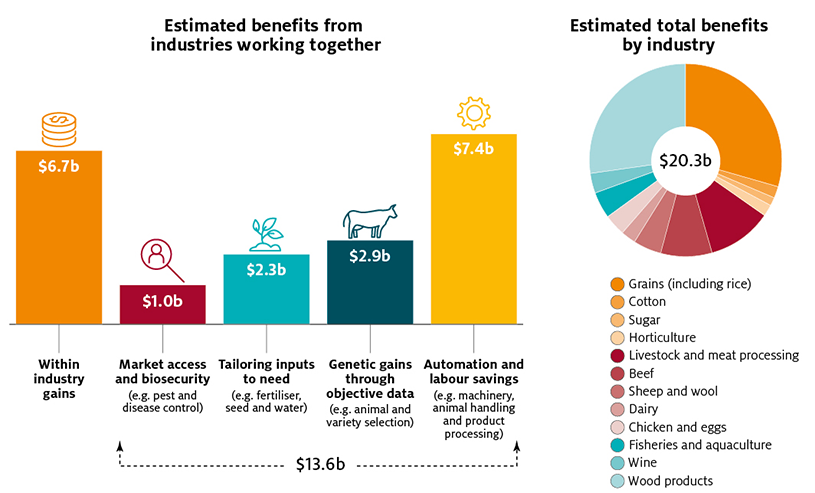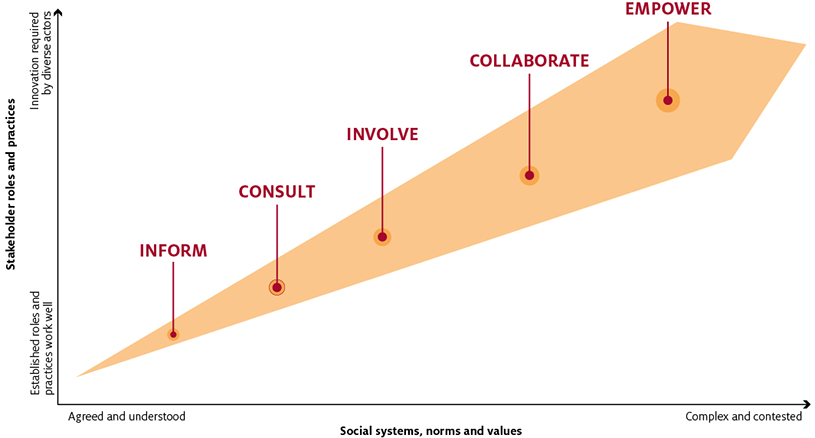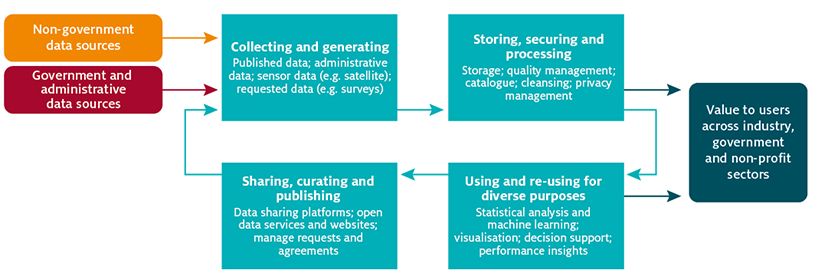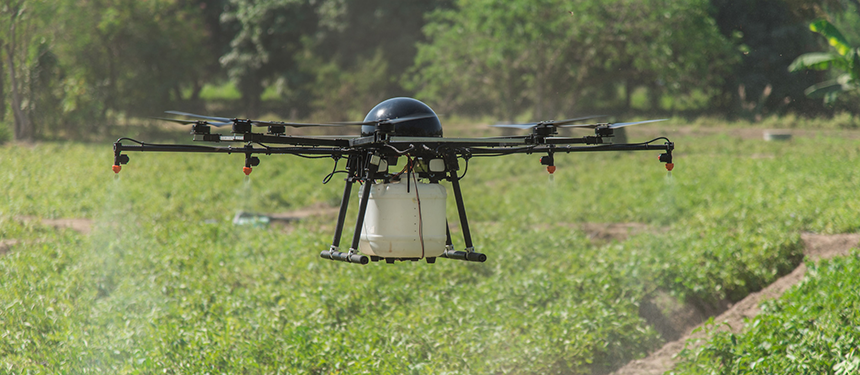
Exponential advances in digital technology, automation, genetics, and synthetics will disrupt and change how food and fibre products are made, marketed, and delivered. Production systems, supply chains, and customer engagement will become more agile and interconnected, requiring new skills and partnerships, and creating risks and opportunities for agricultural producers and regional communities.
[expand all]
Information-rich production systems will provide new levels of control, and accountability
New technologies will apply new information in new ways: automating farming systems; accelerating genetic gains; refining input and cost control; and improving sector and system-level performance in relation to market access and biosecurity (see Figure 13 below). In essence, each of these pathways uses information (in on-farm and supply chain data systems, or the DNA of plants and livestock) to increase the productivity of materials and energy employed in delivering food and fibre to customers and consumers. This megatrend is thus closely linked to, and builds on, the more-from-less megatrend (see page 9 above) – including our predictions that improved genetics will increase yields, and that evolving attitudes and social concerns will create new market opportunities and constraints.
The era of harvesting information from embedded devices and putting it to use to improve systems is only just commencing. Connectivity across billions of devices, often described as the ‘Internet of Things (IoT)’, will transform production systems and supply chains over coming decades. Examples include real-time knowledge of the location and health status of each farm animal informing mustering and other management actions; data driven planting, spraying, and harvesting machinery – gathering precise spatial data on yields and adjusting seeding and fertiliser application to maximise profitability; and automated irrigation systems that account for soil moisture, water prices, weather forecasts, and plant needs.
New types of robotics will unlock new data streams, creating a transformational cycle of data collection and automation. Low-flying drones, equipped with sensors and digital imaging will monitor crops and orchards for flowering, water stress, nutrient deficiencies, disease, and weeds – informing automated responses such as robot or drone-based weed control.
Notes: Estimated potential increase in the gross value of agricultural production by industry assuming high uptake of digital technologies, and increase associated with industries working together by source of benefit.
Source: Leonard, Rainbow and Trindall (eds) 2017, page 7
Revolutionary connectivity will enable new types and levels of customer engagement
Integrated data will see supply-chain management reach back onto the farm in ways not seen before, with real-time tracking of quantity, quality and characteristics of food and fibre products. This will build on current best practice, involving fully integrated tracking systems that allow companies to track and manage the flow of product through their distribution systems – from farm to fork – and trace-back items in the advent of a food safety concern.
In the very near future access to capital and to premium markets will increasingly be linked to farmers recording their management practices in systems that can be audited, with standardised information flowing along supply chains to certify characteristics such as nutritional values, provenance, organic or GM-free certification, animal welfare, and social and environmental performance (including fair-trade, sustainability, and carbon footprint). Producers and suppliers who can access ‘return flows’ of information on wholesale, retail, and consumer price points and link these to purchasing decisions will gain additional advantages from better informed offerings to, and engagement with, downstream customers.
Competitive advantage will increasingly rest on the use of data to understand and engage with customers and stakeholders, in ways that are tailored to context and purpose (see Figure 14). Different commodities, types of farm, regions, and customer issues will present different needs and opportunities. The best results will be achieved when the insights gained are integrated into production systems, driving continuous innovation in products, practices and value propositions.
Unlocking these opportunities will require new data sharing and governance
Harnessing and realising the benefits of these disruptive technologies will require new approaches to managing data and information, including the development and implementation of shared data ecosystem (see Figure 15) that enables a collect once use many times approach. Key success factors will include:
- Clear data sharing arrangements – that are easily discoverable and understandable for data users and make data available at its most detailed, with appropriate privacy protections.
- Common data standards – that support collection of multiple types of public and private data and ensure stakeholder data needs are met, while limiting respondent burden and production costs.
- Common linking keys and data management standards – that ensure data is comparable and can be integrated to support analysis and decision making by diverse users up and down agriculture and food value chains.
- Cooperative approach to stewardship arrangements and resourcing – that ensures the data ecosystem meets industry and government needs, including public good elements.
Trust and collaboration will be central to success. Leaders in agricultural innovation, such as the Netherlands and United States, are well positioned to take advantage of the opportunities big data will bring. In the Netherlands, the innovation sector is driven by multi-agency research projects that have established a culture of collaboration and trust between government, industry, farmers and other supply chain participants. In the United States, a sophisticated for-profit R&D industry and a large farm sector provide strong incentives for innovation and data sharing. Underpinning both these innovation systems are well-resourced statistics agencies that provide high quality data for R&D providers to target and assess the value of project outputs.
ABARES 2020, unpublished

In contrast, Australian agriculture’s digital readiness lags behind, see Leonard et al. (2017). To realise the benefits of digitisation and remain competitive in global markets, Australian agriculture needs to establish a new operating model centred on collaboration and information sharing that aims to meet the current and future needs of the agriculture and food industries as a whole. This is a significant departure from the siloed structure of Australia’s agricultural innovation system, which has been good at addressing sector specific issues but lacks a history of collaboration and cross-sector integration. The move to more collaborative and integrated approach would build scale and scope. This will strengthen incentives for private sector engagement and innovation tailored to domestic needs, enhancing industry productivity and profitability.
The benefits and necessity of this transformation is widely recognised by key stakeholders in Australia’s current data and statistics systems. They also recognise that past efforts have lacked the resources, coordination, breadth, and impetus to address these whole of system issues. Success will require renewed effort and commitment, and a consensus-building approach that brings together stakeholders from multiple sectors, who on their own could not realise the productivity, profitability and traceability improvements offered by collaboration.

Resources and further reading
A major collaborative research project assesses the current state, future options, and likely benefits of enabling digital agriculture in Australia. The ‘precision to decision ‘ project (Leonard et al. 2017) found that current capacity is immature, and that substantial cross-sector and cross-industry collaboration and investment are required. If Australia rises to the challenge, they estimate digital agriculture could lift the gross value of agriculture, forestry and fisheries by 25% – or more than $20 billion (as detailed in Figure 13 above). Growing a digital future for Australian agriculture sets out the next steps being taken by the industry (Trindal et al. 2019).
Wolfert et al. (2017) reviews the implications and outlook for the use of big data in farming systems. They find smart sensors and devices will provide unprecedented automation and decision capabilities, and that big data will cause major shifts in roles, power relationships and business models (see Figure 14 above). This will require the development of new governance arrangements for data ownership, access, privacy and security. Boston Consulting Group (2020) argues that successful digital transformation rests on four pillars: digitizing customer relationships, building digital talent and organisation, harnessing data and advanced technology, and automating and digitizing operations and processes.
A guide to the right engagement (DIIS 2019) provides policy-oriented overview for how to diagnose the nature of a problem and identify the most suitable general engagement approach, along with a catalogue of specific engagement and communication tools and methods that can be used. The Open dialogue roadmap (OGP 2019 volumes I and II) provides more detailed resources.
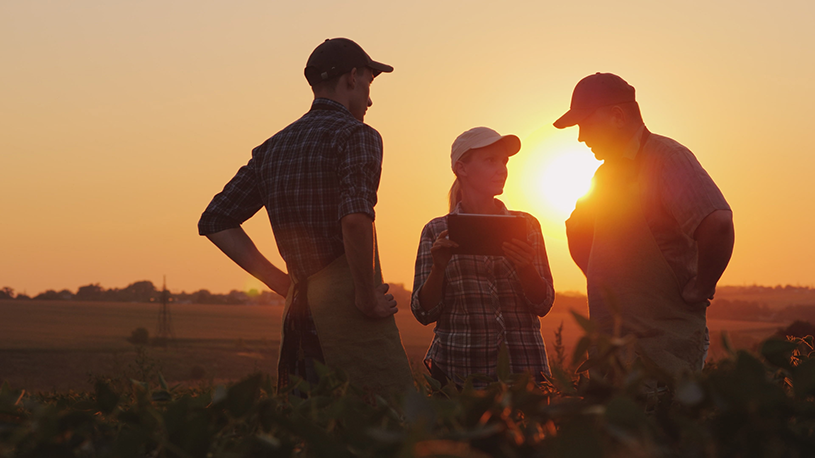
References
Key implications for agriculture
- Well-informed decision making and risk management will remain central to Australian farming. Increasingly, however, the most important farm ‘knowledge assets’ will shift from inside the heads of farmers towards sophisticated computer and data-based decision support systems.
- Integrated and inter-connected systems will provide new options for managing volatility and uncertainty (see Figure 5), including just-in-time production and supply chain management; improved transport and logistics; and new forms of insurance, finance and risk sharing.
- Effective data use will shape access to capital, including through unlocking new forms of investment and risk sharing, including equity investments in family farms. New business models and partnerships will emerge for farming, and food and fibre supply chains. In some cases, this will provide opportunities to capture the value of intangible attributes of farming systems – requiring new skills in marketing, engagement, and relationship management.
- Realising the full benefits of these disruptive technologies will require new approaches to managing data and information, including new roles and responsibilities for government and the private sector, to create a new shared data ecosystem (see Figure 15) that embodies a collect once from diverse sources and use many times approach. Success cannot be taken for granted and will require renewed commitment across the board.

